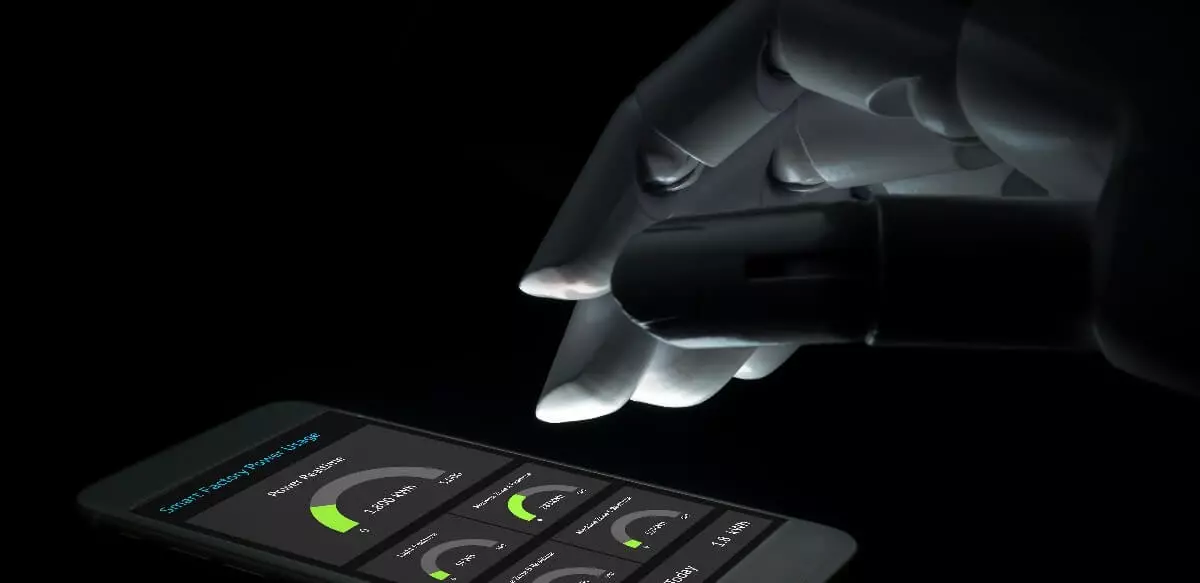That little handheld device, “our second brain,” has quickly become intertwined with the human psyche.
As digital transformation sweeps organizational agenda, each aspect of technology is a critical piece of the puzzle — perhaps none more than mobile.
Business leaders understand that a beautiful website just isn’t enough to tackle the digital world. CIOs and CTOs involved in transforming their organization should have mobile at top priority.
Don’t wade through mobile strategy alone. Explore the most pressing questions every executive should be asking when it comes to mobile.
1. What is a mobile-first strategy and who should use it?
A mobile-first strategy means adapting your organizational structure to take full advantage of mobile’s transformative business power.
Let’s be very clear on this point: In 2018, every company should be pushing for a mobile-first strategy. Mobile is no longer the cherry-on-top of the desesrt, it is the main course.
Let’s take a quick look at the banking industry: Once upon a time, in-house customer service was the most important aspect of the banking experience. Internet banking turned that model on its head. Now mobile is once again changing the game. Mobile applications are the new go-to for bank users — secure, accessible, and with you wherever you are.
A recent study found that millennials will switch banks based solely on the CX of their mobile application.
There are two types of mobile applications that should be the main focus of your mobile strategy:
- Consumer-facing applications
- Employee-facing applications
Although there are different challenges for each, both groups should be positioning themselves to prioritize the user experience.
Discover how to instantly simplify the UX of any product.
2. How can I deliver a mobile-first strategy?
The key to a mobile-first strategy is an authentically mobile experience.
What does that mean? You can’t just copy-paste whatever you were doing on your online strategy into a rectangular format and call it a day. Mobile-first strategy is a whole different beast and must be treated as such.
How does one create an authentically mobile experience?
- Understand your user
- Be context- and location-aware
- Engage the user
- Tailor your offering
Also, hire a great mobile development team.
Don’t use the same programmers who made your website, hire mobile-specific developers. Mobile is a different mindset, and building a quality application takes experienced talent.
3. What makes the mobile user different than the web user and how should this play into my strategy?
The same individual uses both desktop and mobile, but if we isolate their behavior — they might as well be a different species.
The desktop user is a static creature, most likely seated at a desk or table. On the other hand, the mobile user is on-the-go. They could be using their device absolutely anywhere: the gym, in a work meeting, on the toilet or in bed, and the way they react to online stimuli will have everything to do with the physical setting they are in.
In order to deliver the right content, experience, guidance, or offering — you have to understand the context of your user.
Once you unlock this parameter, everything changes.
The Importance of Context
I wake up at 6 am and check my phone. I see a pop-up offering me cheap tickets to Europe. I am barely rubbing the sleep out of my eyes, already making myself a mental to-do list for the day — I don’t have the mental capacity to book a vacation at that moment.
On the other hand, if the same app recognized that I was on the train home from work with time to kill and offered me the same deal… the result might be different. As business leader navigating digital transformation, contextual offering is the next frontier.
4. What are the biggest challenges of a mobile-first strategy on employee-facing applications?
In order to create an effective digital transformation strategy, it is important to understand the inherent challenge of employee-facing mobile applications.
User expectations
Employees are humans, and as humans, they are exposed to consumer-facing apps in their daily life. They expect the same luxurious UX they experience on Instagram and Spotify in their work-based applications.
Complexity
The other problem is that in terms of functionality, customer-facing apps are very simple. Lyft’s purpose is to call a ride. On the other hand, employee-facing apps are much more complex. Think of the features of a CRM — it is endless.
Control
The mobile apps used in the workplace are often licensed third-party applications. The Salesforce mobile app is a common example. Unlike an app your company has created, you do not have control of the underlying code. However, that does not minimize the need to offer employees a mobile-friendly experience.
5. How can I make my employees more productive on legacy applications?
This is one of the biggest challenges of digital transformation for mobile. While you cannot change the app itself, you can restructure the way your employees interact with it.
- Understand what is happening in-app. You cannot change the underlying code, but you can add a layer that will collect analytics.
- Determine which users fail or succeed. Let the data points tell a story about your users.
- Build non-linear onboarding. Employ a different training and onboarding approach for different users.
As the last step in this process, implement on-scene, in-app guidance. Guidance should be contextual, personalized and automatic. Don’t guide people who don’t need help! That is the meaning of nonlinear — not everyone needs to go through the same onboarding path.
6. What is the future of AI and mobile?
AI offers the ability to totally personalize the mobile experience.
With today’s technological capabilities, we are able to access 300+ parameters from internal device sensors and external factors.
- Internal: Whether the phone is face up or face down, what percentage of battery is remaining and the speed with which the user is walking or driving.
- External: Time of date, the day of the week, phone type.
Using artificial intelligence, we can process this information and deliver a hand-tailored experience to each user. We begin to understand not only where the user is within their environment but also what their actions say about them.
We start to understand the user type in terms of behavior categories. Using these, we can then see what user is prone to failure and predict metrics like such as “likely to churn” (customers) or “likely to leave in the middle of a task” (employees).
7. Knowing what we know about user behavior on mobile, how can we influence the desired outcome?
The future of digital transformation through mobile-first strategy is how we use AI and machine learning to transform the user experience.
We can now target each mobile user according to behavior category with the appropriate measures to help them be successful. If I know a user is about to leave and never come back we can offer them a discount or if its an employee offer additional training or guidance.
For example, I see a user’s phone is set to Japanese, but they are traveling in France. Why would I offer them the experience in French if I know they can be better served in Japanese? Actions like this should be the automatic response of our devices to our context. This is how we drive the ultimate customer experience.






